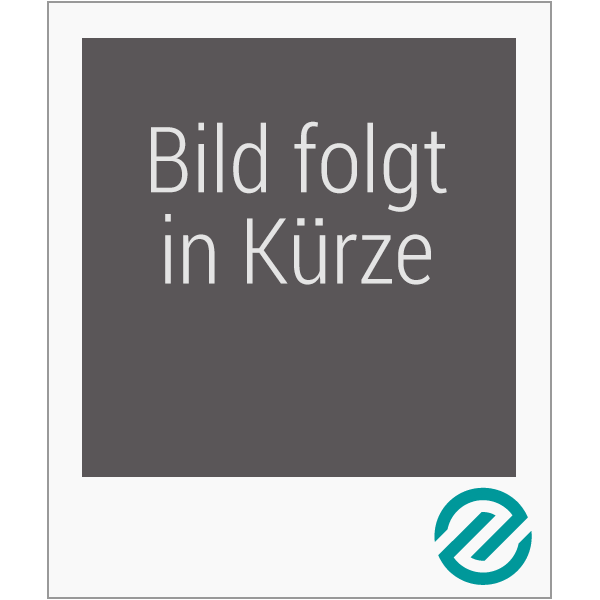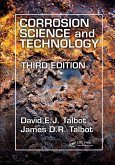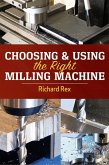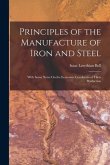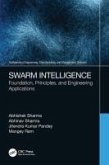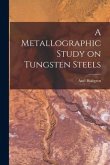Rajesh Jha, Bimal Kumar Jha
Artificial Intelligence-Aided Materials Design
AI-Algorithms and Case Studies on Alloys and Metallurgical Processes
Rajesh Jha, Bimal Kumar Jha
Artificial Intelligence-Aided Materials Design
AI-Algorithms and Case Studies on Alloys and Metallurgical Processes
- Broschiertes Buch
- Merkliste
- Auf die Merkliste
- Bewerten Bewerten
- Teilen
- Produkt teilen
- Produkterinnerung
- Produkterinnerung
This book describes the application of artificial intelligence (AI)/machine learning (ML) concepts to develop predictive models that can be used to design alloy materials. It will appeal to readers who are both new to and experienced with the use of AI/ML algorithms in data-driven materials science.
Andere Kunden interessierten sich auch für
![Metal Matrix Composites Metal Matrix Composites]() Metal Matrix Composites77,99 €
Metal Matrix Composites77,99 €![Electron-Ion-Plasma Modification of a Hypoeutectoid Al-Si Alloy Electron-Ion-Plasma Modification of a Hypoeutectoid Al-Si Alloy]() Dmitrii ZaguliaevElectron-Ion-Plasma Modification of a Hypoeutectoid Al-Si Alloy101,99 €
Dmitrii ZaguliaevElectron-Ion-Plasma Modification of a Hypoeutectoid Al-Si Alloy101,99 €![Corrosion Science and Technology Corrosion Science and Technology]() David E J TalbotCorrosion Science and Technology86,99 €
David E J TalbotCorrosion Science and Technology86,99 €![Choosing & Using the Right Milling Machine Choosing & Using the Right Milling Machine]() Richard RexChoosing & Using the Right Milling Machine58,99 €
Richard RexChoosing & Using the Right Milling Machine58,99 €![Principles of the Manufacture of Iron and Steel: With Some Notes On the Economic Conditions of Their Production Principles of the Manufacture of Iron and Steel: With Some Notes On the Economic Conditions of Their Production]() Isaac Lowthian BellPrinciples of the Manufacture of Iron and Steel: With Some Notes On the Economic Conditions of Their Production36,99 €
Isaac Lowthian BellPrinciples of the Manufacture of Iron and Steel: With Some Notes On the Economic Conditions of Their Production36,99 €![Swarm Intelligence Swarm Intelligence]() Abhishek SharmaSwarm Intelligence71,99 €
Abhishek SharmaSwarm Intelligence71,99 €![A Metallographic Study on Tungsten Steels A Metallographic Study on Tungsten Steels]() Axel HultgrenA Metallographic Study on Tungsten Steels21,99 €
Axel HultgrenA Metallographic Study on Tungsten Steels21,99 €-
-
-
This book describes the application of artificial intelligence (AI)/machine learning (ML) concepts to develop predictive models that can be used to design alloy materials. It will appeal to readers who are both new to and experienced with the use of AI/ML algorithms in data-driven materials science.
Hinweis: Dieser Artikel kann nur an eine deutsche Lieferadresse ausgeliefert werden.
Hinweis: Dieser Artikel kann nur an eine deutsche Lieferadresse ausgeliefert werden.
Produktdetails
- Produktdetails
- Verlag: CRC Press
- Seitenzahl: 334
- Erscheinungstermin: 4. Oktober 2024
- Englisch
- Abmessung: 229mm x 153mm x 20mm
- Gewicht: 518g
- ISBN-13: 9780367765286
- ISBN-10: 0367765284
- Artikelnr.: 71543942
- Herstellerkennzeichnung
- Libri GmbH
- Europaallee 1
- 36244 Bad Hersfeld
- gpsr@libri.de
- Verlag: CRC Press
- Seitenzahl: 334
- Erscheinungstermin: 4. Oktober 2024
- Englisch
- Abmessung: 229mm x 153mm x 20mm
- Gewicht: 518g
- ISBN-13: 9780367765286
- ISBN-10: 0367765284
- Artikelnr.: 71543942
- Herstellerkennzeichnung
- Libri GmbH
- Europaallee 1
- 36244 Bad Hersfeld
- gpsr@libri.de
Dr. Rajesh Jha is a postdoctoral researcher at the Department of Mechanical and Materials Engineering, Florida International University (FIU). Prior to FIU, he worked as a postdoctoral researcher at the Department of Mechanical Engineering, Colorado School of Mines, Golden, Colorado. He graduated with a PhD in Materials Science and Engineering from Florida International University, Miami, FL, in 2016; Master of Technology in Metallurgical and Materials Engineering from Indian Institute of Technology, Kharagpur, India, in 2012; and BSc in Metallurgical Engineering from BIT, Sindri, Jharkhand, India, in 2009. Dr. Jha has worked as a faculty in Metallurgy at OP Jindal University, India. He has a strong background as an experimentalist and has worked as a Project Assistant at National Metallurgical Laboratory, Jamshedpur, India, working on microscopy, additive manufacturing, coatings, and corrosion. Since 2010, he has been working extensively on Machine Learning (ML)/Artificial Intelligence (AI) algorithms for developing prediction models, along with Evolutionary (EA) or Genetic algorithms (GA) for Multi-objective Optimization. He has applied AI/ML algorithms in the field of materials and alloy design and process metallurgy. He will deliver a lecture on AI/ML-based algorithms application in alloy design at E-MRS Fall 2021. In March 2021, he received the best poster award for his AI/ML-based work at US NSF-JST (Japan) joint workshop on Materials Informatics and Quantum Computing. He has published over 30 publications, including two book chapters, journal articles, and peer-reviewed international conference proceedings. He has developed a software for simulating nanoindentation through ML and is currently working on patenting his software and is in direct communication with a company interested in licensing it. He has served as an editor and on the reviewer board of academic journals and has reviewed articles for 16 international journals on multi-disciplinary topics. Dr. Bimal Kumar Jha, Former Executive Director, Research and Development Centre for Iron &Steel, SAIL, Ranchi, graduated in Metallurgical Engineering from University of Roorkee in 1978 with the unique distinction of being awarded with all the five medals of the Metallurgical Engineering Department. He joined RDCIS, SAIL, in 1980 after completing MTech at IIT Kanpur. He completed his PhD on TRIP Steels from University of Roorkee in 1996. Dr. Jha in his various capacities in RDCIS spearheaded product development and commercialization activities of SAIL from 2005 to 2015. Dr Jha as head of RDCIS made outstanding contribution toward formulation of companywide R&D Master Plan. Under his leadership, a process was evolved to identify and capture R&D expenditure in SAIL plants/units. As a Steel Industry-Academia Interface (SIAI) convener, he has been involved in formation of Steel Research and Technology Mission of India (SRTMI) and has identified major technology developments of National importance in Steel Sector. His keen interest in research and development is amply manifested through more than 140 numbers of publications in the journals of national and international repute and filing of 45 patents to his credit. In 2015, Dr. B.K. Jha was conferred the National Metallurgist Award (Industry) by Ministry of Steel, the highest honor in India for the metallurgical profession. He has also received the prestigious Metallurgist of the Year Award in 2002 from Ministry of Steel and O.P. Jindal Gold Medal in 2014 from Indian Institute of Metals (IIM). He was a visiting professor in IIT, Roorkee, before joining National Institute of Foundry and Forge Technology (NIFFT), Ranchi, India, as a professor.
1. Introduction. 2. Metallurgical/Materials Concepts. 3. Artificial
Intelligence Algorithms. 4. Case Study #4: Computational Platform for
Developing Predictive Models for Predicting Load-Displacement Curve and AFM
Image: Combined Experimental-Machine Learning Approach. 5. Case Study #5:
Design of Hard Magnetic Alnico Alloys: Combined Machine
Learning-Experimental Approach. 6. Case Study #6: Design and Discovery of
Soft Magnetic Alloys: Combined Machine Learning-CALPHAD Approach. 7. Case
Study #7: Nickel-Base Superalloys: Combined Machine Learning-CALPHAD
Approach. 8. Case Study #8: Design of Aluminum Alloys: Combined Machine
Learning-CALPHAD Approach. 9. Case Study #9: Titanium Alloys for
High-Temperature Application: Combined Machine Learning-CALPHAD Approach.
10. Case Study #10: Design of ß-Stabilized, ¿-Free Titanium Based
Biomaterials: Combined Machine Learning-CALPHAD Approach. 11. Case Study
#11: Industrial Furnaces I: Application of Machine Learning on an
Industrial Iron-Making Blast Furnace Data. 12. Case Study #12: Development
of GUI/APP to Determine Additions in LD Steel Making Furnace. 13. Case
Study #13: Selection of a Supervised Machine Learning(Response Surface)
Algorithm for a Given Problem. 14. Case Study #14: Effect of Operating
Parameters on Roll Force and Torque in an Industrial Rolling Mill:
Supervised and Unsupervised Machine Learning Approach. 15. Case Study #15:
Developing Predictive Models for Flow Stress by Utilizing Experimental Data
Generated From Gleeble Testing Machine: Combined Experimental-Supervised
Machine Learning Approach. 16. Computational Platforms Used in This Work.
Intelligence Algorithms. 4. Case Study #4: Computational Platform for
Developing Predictive Models for Predicting Load-Displacement Curve and AFM
Image: Combined Experimental-Machine Learning Approach. 5. Case Study #5:
Design of Hard Magnetic Alnico Alloys: Combined Machine
Learning-Experimental Approach. 6. Case Study #6: Design and Discovery of
Soft Magnetic Alloys: Combined Machine Learning-CALPHAD Approach. 7. Case
Study #7: Nickel-Base Superalloys: Combined Machine Learning-CALPHAD
Approach. 8. Case Study #8: Design of Aluminum Alloys: Combined Machine
Learning-CALPHAD Approach. 9. Case Study #9: Titanium Alloys for
High-Temperature Application: Combined Machine Learning-CALPHAD Approach.
10. Case Study #10: Design of ß-Stabilized, ¿-Free Titanium Based
Biomaterials: Combined Machine Learning-CALPHAD Approach. 11. Case Study
#11: Industrial Furnaces I: Application of Machine Learning on an
Industrial Iron-Making Blast Furnace Data. 12. Case Study #12: Development
of GUI/APP to Determine Additions in LD Steel Making Furnace. 13. Case
Study #13: Selection of a Supervised Machine Learning(Response Surface)
Algorithm for a Given Problem. 14. Case Study #14: Effect of Operating
Parameters on Roll Force and Torque in an Industrial Rolling Mill:
Supervised and Unsupervised Machine Learning Approach. 15. Case Study #15:
Developing Predictive Models for Flow Stress by Utilizing Experimental Data
Generated From Gleeble Testing Machine: Combined Experimental-Supervised
Machine Learning Approach. 16. Computational Platforms Used in This Work.
1. Introduction. 2. Metallurgical/Materials Concepts. 3. Artificial
Intelligence Algorithms. 4. Case Study #4: Computational Platform for
Developing Predictive Models for Predicting Load-Displacement Curve and AFM
Image: Combined Experimental-Machine Learning Approach. 5. Case Study #5:
Design of Hard Magnetic Alnico Alloys: Combined Machine
Learning-Experimental Approach. 6. Case Study #6: Design and Discovery of
Soft Magnetic Alloys: Combined Machine Learning-CALPHAD Approach. 7. Case
Study #7: Nickel-Base Superalloys: Combined Machine Learning-CALPHAD
Approach. 8. Case Study #8: Design of Aluminum Alloys: Combined Machine
Learning-CALPHAD Approach. 9. Case Study #9: Titanium Alloys for
High-Temperature Application: Combined Machine Learning-CALPHAD Approach.
10. Case Study #10: Design of ß-Stabilized, ¿-Free Titanium Based
Biomaterials: Combined Machine Learning-CALPHAD Approach. 11. Case Study
#11: Industrial Furnaces I: Application of Machine Learning on an
Industrial Iron-Making Blast Furnace Data. 12. Case Study #12: Development
of GUI/APP to Determine Additions in LD Steel Making Furnace. 13. Case
Study #13: Selection of a Supervised Machine Learning(Response Surface)
Algorithm for a Given Problem. 14. Case Study #14: Effect of Operating
Parameters on Roll Force and Torque in an Industrial Rolling Mill:
Supervised and Unsupervised Machine Learning Approach. 15. Case Study #15:
Developing Predictive Models for Flow Stress by Utilizing Experimental Data
Generated From Gleeble Testing Machine: Combined Experimental-Supervised
Machine Learning Approach. 16. Computational Platforms Used in This Work.
Intelligence Algorithms. 4. Case Study #4: Computational Platform for
Developing Predictive Models for Predicting Load-Displacement Curve and AFM
Image: Combined Experimental-Machine Learning Approach. 5. Case Study #5:
Design of Hard Magnetic Alnico Alloys: Combined Machine
Learning-Experimental Approach. 6. Case Study #6: Design and Discovery of
Soft Magnetic Alloys: Combined Machine Learning-CALPHAD Approach. 7. Case
Study #7: Nickel-Base Superalloys: Combined Machine Learning-CALPHAD
Approach. 8. Case Study #8: Design of Aluminum Alloys: Combined Machine
Learning-CALPHAD Approach. 9. Case Study #9: Titanium Alloys for
High-Temperature Application: Combined Machine Learning-CALPHAD Approach.
10. Case Study #10: Design of ß-Stabilized, ¿-Free Titanium Based
Biomaterials: Combined Machine Learning-CALPHAD Approach. 11. Case Study
#11: Industrial Furnaces I: Application of Machine Learning on an
Industrial Iron-Making Blast Furnace Data. 12. Case Study #12: Development
of GUI/APP to Determine Additions in LD Steel Making Furnace. 13. Case
Study #13: Selection of a Supervised Machine Learning(Response Surface)
Algorithm for a Given Problem. 14. Case Study #14: Effect of Operating
Parameters on Roll Force and Torque in an Industrial Rolling Mill:
Supervised and Unsupervised Machine Learning Approach. 15. Case Study #15:
Developing Predictive Models for Flow Stress by Utilizing Experimental Data
Generated From Gleeble Testing Machine: Combined Experimental-Supervised
Machine Learning Approach. 16. Computational Platforms Used in This Work.

